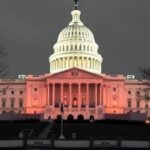Fed’s Aggressive Rate Cuts Miss the Mark on Mortgage Relief
In a twist that’s frustrating millions of aspiring homeowners, U.S. Mortgage rates have stubbornly held above 7% even after the Federal Reserve’s recent series of interest rate reductions. The 30-year fixed mortgage rate, a benchmark for home loans, averaged 7.08% this week, according to Freddie Mac data, showing little movement from the prior week’s 7.10%. This persistence comes despite the Fed slashing its benchmark federal funds rate by a full percentage point since September, aiming to ease borrowing costs across the economy.
- Fed’s Aggressive Rate Cuts Miss the Mark on Mortgage Relief
- Untangling the Bond Market’s Grip on Mortgage Rates
- Homebuyers Feel the Squeeze Amid Soaring Affordability Challenges
- Experts Debate the Broader Economic Outlook for Interest Rates
- Potential Pathways Forward: Policy Shifts and Market Adjustments
The disconnect highlights a key reality in the housing market: Mortgage rates don’t directly mirror the Fed’s short-term policy moves. Instead, they are more closely tied to long-term interest rates, particularly the yield on the 10-year Treasury note, which has hovered around 4.2% amid lingering inflation concerns and global economic uncertainties. For homebuyers, this means the anticipated wave of affordability hasn’t materialized, with monthly payments on a typical $400,000 loan still exceeding $2,600—up sharply from the sub-3% rates that fueled the pandemic housing boom.
Economists warn that this stagnation could prolong the housing market slowdown, where existing home sales have dipped 20% year-over-year, per the National Association of Realtors (NAR). ‘The Fed’s actions are like turning on a faucet in a clogged pipe,’ said Mark Zandi, chief economist at Moody’s Analytics. ‘Until bond markets calm, Mortgage rates won’t follow suit.’
Untangling the Bond Market’s Grip on Mortgage Rates
Delving deeper, the reluctance of mortgage rates to fall stems from the intricate dance between Federal Reserve policies and broader financial markets. The Fed’s rate cuts, which brought the federal funds rate down to a range of 4.75% to 5%, were designed to combat slowing growth and cooling inflation. Yet, the 10-year Treasury yield—a proxy for long-term interest rates—hasn’t budged much, influenced by factors like persistent wage growth, geopolitical tensions in the Middle East, and expectations of future inflation spikes.
Historically, mortgage rates track the 10-year Treasury with a spread of about 1.5 to 2 percentage points. During the pandemic, this spread widened temporarily due to lender caution, but today it’s the yield itself that’s the bottleneck. Data from the Mortgage Bankers Association (MBA) shows that while refinance applications surged 15% last week on hopes of lower rates, purchase applications remain flat, underscoring buyer hesitation in the current housing market.
Adding to the complexity, mortgage-backed securities (MBS), which bundle home loans for investors, are sensitive to prepayment risks. If rates drop too quickly, borrowers refinance, disrupting investor returns. This dynamic has kept lenders from passing on Fed savings, maintaining rates above 7%. ‘It’s a classic case of market forces overriding central bank intentions,’ noted Julia Coronado, founder of Macro Policy Perspectives. The result? A housing market where inventory remains low at 3.5 months’ supply, far below the balanced 5-6 months, per NAR figures.
Homebuyers Feel the Squeeze Amid Soaring Affordability Challenges
For the average American family, the elevated mortgage rates are translating into a harsh reality: homeownership feels increasingly out of reach. The median existing-home price hit $412,300 in October, a record high, while the income needed to afford it comfortably has risen to over $120,000 annually—double the median household income of $59,000, according to Redfin analysis. This affordability crunch is hitting first-time buyers hardest, with their share of purchases dropping to 28%, the lowest since 1989.
In key markets like Atlanta and Phoenix, where prices surged post-pandemic, monthly mortgage payments have ballooned 50% since 2020. ‘We’re seeing qualified buyers sidelined, waiting for rates to crack,’ said Danielle Hale, NAR’s chief economist. Stories abound of couples postponing life plans; one Phoenix realtor reported a client who abandoned a home search after calculations showed payments eating 40% of their budget.
The ripple effects extend beyond individuals. Construction starts for single-family homes fell 8% in September, per U.S. Census Bureau data, as builders grapple with higher borrowing costs for development loans tied to similar interest rates. Rents, meanwhile, have climbed 5% year-over-year, pushing more renters toward precarious financial edges and exacerbating the housing market’s supply-demand imbalance.
- Key Stats on Affordability: Housing affordability index at 98.9, the lowest in 50 years (NAR).
- Buyer Demographics: Millennials, now in prime buying years, face 20% higher rates than their parents did at the same age.
- Regional Variations: Rates slightly lower in the Midwest at 6.95%, but West Coast averages push 7.2%.
Experts Debate the Broader Economic Outlook for Interest Rates
As the Federal Reserve pauses to assess its rate cuts’ impact, opinions vary on whether mortgage rates will finally ease. Optimists point to cooling inflation—now at 2.4% core PCE, nearing the Fed’s 2% target—as a sign that Treasury yields could dip, potentially pulling mortgage rates below 7% by mid-2024. Fed Chair Jerome Powell, in recent testimony, emphasized a data-dependent approach, hinting at possible additional cuts if employment softens further.
Pessimists, however, cite fiscal uncertainties, including the ballooning U.S. deficit projected at $1.8 trillion for 2023 by the Congressional Budget Office, which could keep long-term rates elevated. ‘Without deficit reduction, expect mortgage rates to linger in the 6.5-7.5% range,’ warned Greg McBride, chief financial analyst at Bankrate. Global factors, like the European Central Bank’s hawkish stance and China’s economic woes, add layers of unpredictability to the economic outlook.
Surveys reflect divided sentiments: A Fannie Mae poll shows 60% of economists predicting sub-7% rates by year’s end, but consumer confidence in housing remains low, with only 25% believing now is a good time to buy, per the Conference Board. Realtors are adapting with strategies like buydown programs, where sellers cover points to temporarily lower rates, but these add upfront costs that deter budget-conscious buyers.
In interviews, industry leaders like David Stevens, former FHA commissioner, argue for policy interventions. ‘The Fed needs to signal longer-term stability to tame bond markets,’ he said. Meanwhile, the MBA forecasts a modest 5% rise in home sales for 2024 if rates ease to 6.8%, but warns of stagnation otherwise.
Potential Pathways Forward: Policy Shifts and Market Adjustments
Looking ahead, the trajectory of mortgage rates hinges on several pivotal developments. The Federal Reserve’s next meeting in December could deliver another quarter-point cut, but Chair Powell has stressed that future moves depend on inflation trends and labor market data. If the November jobs report shows continued softening—unemployment at 4.1% and slowing wage gains—markets may price in more easing, nudging Treasury yields lower and offering some relief to the housing market.
Government initiatives could also play a role. Proposals in Congress for expanding tax credits for first-time buyers or streamlining zoning to boost supply aim to address affordability without relying solely on interest rates. The Biden administration’s $25,000 down payment assistance program, if expanded, might help bridge the gap for lower-income households. On the investor side, increased foreign buying of Treasuries could suppress yields, indirectly benefiting mortgage rates.
Yet challenges persist. If inflation reaccelerates due to supply chain disruptions or energy price volatility, the Fed might halt cuts, keeping rates elevated and prolonging the economic outlook of subdued growth. Homebuilders are pivoting to smaller, more affordable units, with a 15% uptick in starter-home construction, per Census data. Buyers, too, are shifting strategies—opting for urban condos over suburban McMansions or delaying purchases until rates subside.
Ultimately, while the current standoff above 7% tests the resilience of the U.S. economy, it also underscores the housing market’s vulnerability. As experts monitor upcoming Fed signals and economic indicators, the hope is for a thaw that restores balance, preventing a deeper affordability crisis from derailing broader recovery efforts. For now, prospective homeowners remain in a holding pattern, eyes fixed on the next data release that could tip the scales.









